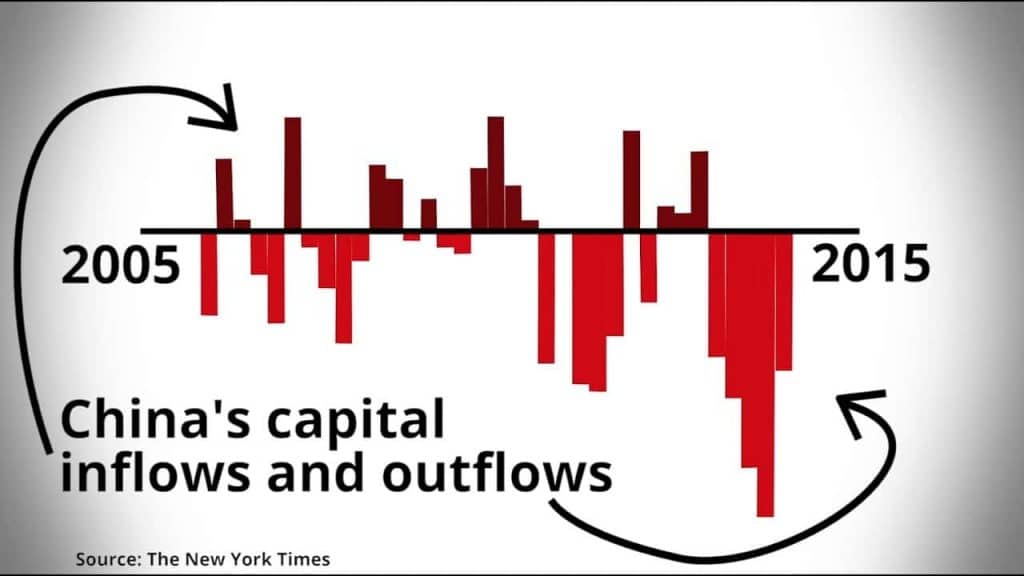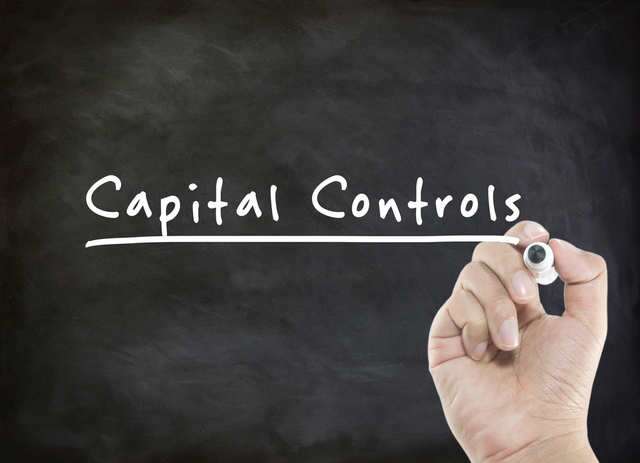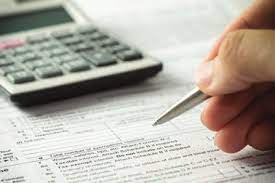Have you been wondering what capital controls are, what they prevent, their examples, and their types? Grab a seat and read through because this post has the potentials of answering the above questions. Also included are types and capital controls in China.
What are capital controls?
Capital controls are government restrictions on the inflow and outflow of money. They include limits on foreign currency exchange, limits on the purchase of assets, and taxes on financial transfers. In other words, capital controls are occupancy established plans that a nation’s government put in place to rotate financial flows.
However, due to some government Monetary policies, these controls may restrict domestic citizens from acquiring foreign assets or foreigners from buying domestic assets. Most countries have eased down the practice of capital controls. But some countries, like China, still take them seriously. The good news is, you can now take as much money as you want and invest in other countries.
What do capital controls prevent?
- They prevent domestic citizens from acquiring foreign assets. This is referred to as capital outflow control. On the other hand, they also prevent foreigners from acquiring domestic assets which is referred to as capital inflow controls.
- Free market economists believe that capital controls prevent the flow of capital to where it is most profitable. It forces domestic investors to gain a lower rate on ROIs (Return on Investment), leading to a lower income.
- Capital controls can discourage foreign investors and prevent them from investing in a developed economy.
- Finally, they can limit the free movement of capital, which consequently, will make the developing economies unable to catch up with the developed world.
Practical Examples of capital controls
You should note that Capital controls are sometimes put in place after an economic crisis. The reason for this is to prevent domestic citizens and foreign investors from withdrawing funds from a country. However, examples of capital controls include:
Greek controls
Our first Capital control example will go through the Greek experience.
The European Central Bank froze support to Greece on June 29, 2015. This was during the European sovereign debt crisis. Greece responded by closing its banks and carrying out controls for a period of time. The government feared that Greek citizens would run on banks. So, the monetary controls put limits on allowable daily cash withdrawals at banks. It also placed restrictions on money transfers and overseas credit card payments.
Recently, Greece’s Finance Minister announced that the country would ease its controls to increase confidence in Greek banks. The easing was expected to increase the amount of money held at Greek banks.
While Greece was putting the worst of the economic crisis behind it as it exited the bailout program, the government loosened the limits on cash withdrawals and increased the allowance for business cash transfers. Since the Greek debt crisis intensified in the 2010s decade, Greece has implemented capital controls. The Greek Government lifted its last capital restriction 50 months after it was introduced. Subsequently, this was done on September 1st, 2019.
However, the risks associated with the change of capital flows have led many countries to make use of controls alongside macroeconomic and prudential policies. Eventually, this would help reduce the effects of unstable flows on their economies.
Iceland controls
In its 2008 financial crisis, Iceland imposed controls due to the collapse of its banking system. Iceland’s government said in June 2015 that it planned to lift them. However since the announced plans included a tax on moving money in any form out of the country, arguably they still constituted controls. Iceland’s government announced that capital controls had been lifted on 12 March 2017.
Lastly on the capital control examples is the Cyprus control.
Cyprus controls
Cyprus, a Eurozone member state which has close links to Greece, imposed the Eurozone’s first temporary controls in 2013 as part of its response to its 2012 banking crisis. These capital controls were lifted in 2015, with the last controls being removed in April 2015.
What Is an Example of a Capital Control?
Capital control tactics include, among other things, taxes, tariffs, outright bans, and limits. Capital controls restrict citizens’ ability to purchase foreign assets and foreigners’ capacity to purchase domestic assets.
What Do Capital Controls Prevent?
Money control refers to any measure implemented by a government, central bank, or other regulatory authority to limit the inflow and outflow of foreign capital into and out of an economy. They can protect the currency from speculative attacks and depreciation.
Why Do Countries Use Capital Controls?
The primary objective of capital restrictions is to decrease the volatility of currency rates in the economy and offer stability and support by protecting it from extreme changes. Outflows of capital wreak havoc on the flow, resulting in a quick devaluation of the home currency.
Types of capital control
Types of capital control include exchange controls that limit the buying and selling of national currencies at the market rate. There have been several opinions on whether capital controls are beneficial and in what circumstances they can be used.
Consequently, types of Capital controls have taken two main forms: Direct or administrative and Indirect or market-based controls.
#1. Direct or administrative capital controls:
This is one of the major types of capital controls that sub-restricts capital transactions. The associated payments and transfers of funds through outright prohibitions, explicit quantitative limits, or an approval procedure typically seek to directly affect the volume of the relevant cross-border financial transactions.
A common characteristic of such controls is that they impose administrative obligations on the banking system to control flows. Administrative or direct controls further involve either outright prohibitions on or an (often discretionary) approval procedure for, cross-border capital transactions.
#2. Indirect or market-based controls
This type of capital controls discourages capital movements and the associated transactions by making them more costly to undertake. Such controls may take various forms, including dual or multiple exchange rate systems, explicit or implicit taxation of cross-border financial flows. This is however depending on their specific type.
Market-based controls may also affect only the price or both the price and volume of a given transaction.
Capital controls in China

Controls limiting a nation’s residents from owning foreign assets can ensure that domestic credit is available more cheaply. This sort of control is still in effect in both India and China.
In India, controls encourage residents to provide cheap funds directly to the government, while in China it means that Chinese businesses have access to inexpensive sources of loans.
On the other hand, businesses operating in China or trading with Chinese companies may face challenges moving funds in and out of the country. This is due to China’s use of capital to manage the economy. Basically, the Chinese government believes that it’s impossible for any country to retain control of its domestic monetary policy when there’s free movement of capital and a fixed or managed foreign exchange rate.
Effects of Chinese controls
The yuan’s exchange rate slid towards the end of 2016. Chinese authorities imposed a range of new controls designed to prevent wealthy Chinese individuals and corporations from moving money out of China. The measures included restrictions on Chinese investment in foreign companies and overseas real estate. Controls already in place included scrutiny of cross-border payments to clamp down on over-invoicing, and instructions to banks to ensure that incoming and outgoing payments balance. There was also a clampdown on individuals smuggling cash notes out of China.
As a result of these developments, the flows out of China reduced and the CNY’s exchange rate strengthened. This was in the first part of 2017. But even with capital controls, China has not managed to maintain a fully independent monetary policy.
However, the most immediate effect of China’s new capital controls was to reduce business investment. The principal aim was to reduce outflows. Mostly, it affected Chinese businesses and households.
In the long run, there is concern that tighter exchange controls and restrictions on cross-border payments may make it difficult for foreign businesses operating in China to pay suppliers or return funds. Meanwhile, China is considering relaxing restrictions to allow its citizens to invest in securities outside its borders. This is to facilitate two-way capital flows as it opens its own capital markets to more foreign investors.
Take away
Economic historians who ranked capital controls as repressive have concluded that controls were responsible for the infrequency of crisis. Large uncontrolled capital inflows have frequently damaged a nation’s economic development by causing its currency to depreciate.
Other resultant effects include its contributions to inflation and the triggering of unsustainable economic booms which often precedes financial crises – caused when the inflows sharply reverse and both domestic and foreign capital flee the country. As a result, developing economies are highly at risk where the inward flows of loans are denominated in foreign currency. This will hereby make repayments more expensive as the developing country’s currency depreciates.
FAQs
What is the purpose of capital controls?
Capital controls are put in place to manage financial flows from capital markets into and out of a country’s capital account. These regulations might apply to the entire economy or to a specific sector or industry. Government monetary policy can implement capital control.
What are Chinese capital controls?
Capital controls are important to China and have served as the foundation for the country’s spectacular economic growth over the last 40 years. While domestic households are barred from investing overseas and foreign investors are barred from entering financial markets, monies are kept safe within China’s boundaries.
What do capital controls prevent?
They make it illegal for citizens of the United States to acquire foreign assets (capital outflow control). Capital controls also prevent foreigners from purchasing domestic assets, a practice known as capital inflow controls.






